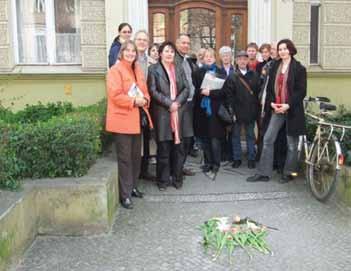
1 minute read
A Stolperstein in memory of Mark Ginzburg L
ast year, a plaque –known as a Stolperstein – was placed outside the home of Jewish Holocaust Centre survivor guide George Ginzburg’s former family home in Berlin. The plaque acknowledges that George’s father, Mark Ginzburg, was deported to Auschwitz, where he was murdered.

Advertisement
Stolperstein is the German word meaning ‘stumbling block’ or ‘obstacle’. The artist Gunter Demnig has given this word a new meaning – a small brass cobblestone-sized memorial for a single victim of Nazism, set in the pavement in front of the building in which that person lived. These memorials commemorate individuals – survivors as well as those who perished –who were deported by the Nazis to prisons, concentration camps and extermination camps. They also memorialise individuals who responded to persecution by committing suicide. Stolpersteine have been erected for the many groups who were victims of Nazi persecution, among them Jews, Sinti and Romani (gypsies), homosexuals, Jehovah’s Witnesses, members of the Communist Party and the Resistance, and people with disabilities.
Demnig began making his Stolpersteine in 1993, and they can now be found throughout Germany, as well as in Austria, The Netherlands and Hungary.




